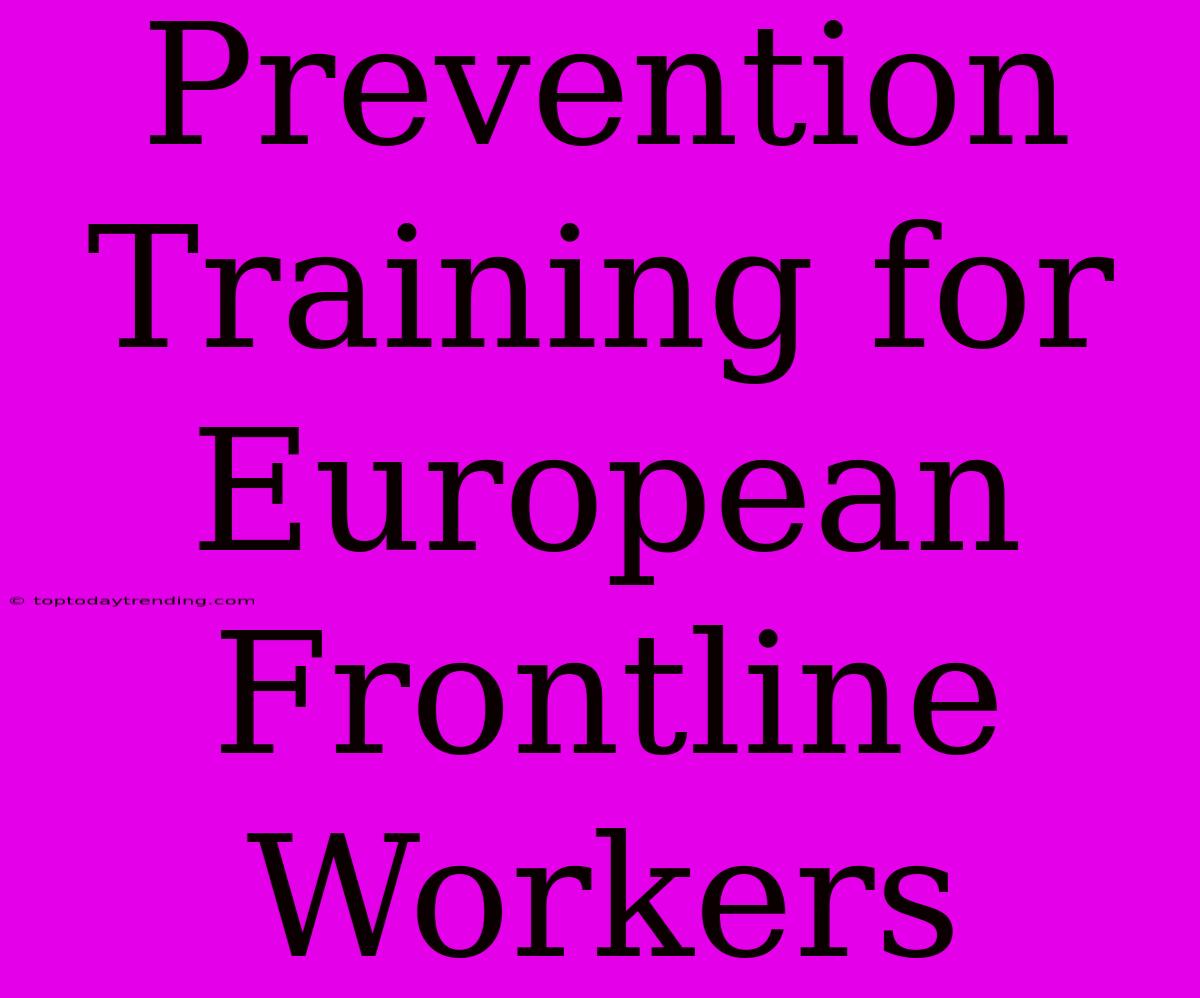Prevention Training for European Frontline Workers: A Crucial Step Towards a Safer Workplace
Frontline workers in Europe are the backbone of many industries, playing a vital role in keeping our economies running. However, they also face a higher risk of occupational hazards and accidents. This makes prevention training a crucial investment for employers and a critical step towards a safer and healthier workplace for all.
Why is Prevention Training Essential for Frontline Workers?
Frontline workers often work in challenging and unpredictable environments, dealing with:
- Physical hazards: Heavy lifting, exposure to noise, chemicals, or extreme temperatures.
- Ergonomic risks: Repetitive tasks, awkward postures, and prolonged standing.
- Mental health challenges: Stress, fatigue, and burnout due to high workloads and demanding schedules.
- Safety risks: Working with machinery, handling hazardous materials, or working in isolated areas.
These risks highlight the need for comprehensive prevention training. It equips workers with the knowledge, skills, and behaviors to identify, assess, and control potential hazards in their work environment.
Key Components of Prevention Training:
- Hazard Identification: Training should empower workers to identify potential hazards in their work environment and understand the associated risks. This includes recognizing common safety hazards, understanding the potential consequences of exposure, and learning how to use risk assessment tools.
- Safe Work Practices: This component focuses on teaching workers the proper procedures and techniques to perform their tasks safely. It involves demonstrating the correct use of equipment, explaining the importance of following established safety protocols, and emphasizing the benefits of using personal protective equipment (PPE).
- Emergency Preparedness: Frontline workers should be trained on how to respond effectively in case of emergencies. This includes practicing emergency evacuation procedures, understanding the use of fire extinguishers and other safety equipment, and learning basic first aid and CPR.
- Communication & Teamwork: Effective communication and teamwork are essential for a safe workplace. Training should emphasize clear communication channels, the importance of reporting hazards or near-miss incidents, and how to collaborate with colleagues to ensure everyone's safety.
Benefits of Investing in Prevention Training:
- Reduced Accidents & Injuries: Proper training leads to a better understanding of safety protocols, resulting in a significant reduction in workplace accidents and injuries.
- Improved Productivity: A safe and healthy workplace leads to higher employee morale and reduced absenteeism, ultimately boosting productivity.
- Enhanced Employee Engagement: Investing in prevention training demonstrates a commitment to employee well-being, which fosters trust and engagement.
- Legal Compliance: Many European countries have regulations requiring employers to provide adequate safety training for their workers.
Implementing Effective Prevention Training:
- Tailored Training: Training should be tailored to the specific needs and hazards of each work environment. This ensures that workers are receiving relevant and practical information.
- Interactive Approach: Effective training involves active participation from workers. This can be achieved through hands-on exercises, role-playing scenarios, and interactive quizzes.
- Regular Refreshers: Prevention training should be a continuous process. Regular refresher courses ensure that workers stay up-to-date on safety protocols and procedures.
- Feedback and Evaluation: Regularly assessing the effectiveness of training programs helps to identify areas for improvement and ensure they are meeting their intended objectives.
Conclusion:
Investing in prevention training for frontline workers is a wise and essential step for employers in Europe. It benefits not only the well-being of employees but also improves productivity and compliance with legal regulations. By prioritizing safety and creating a culture of prevention, organizations can create a healthier and more sustainable workplace for all.

